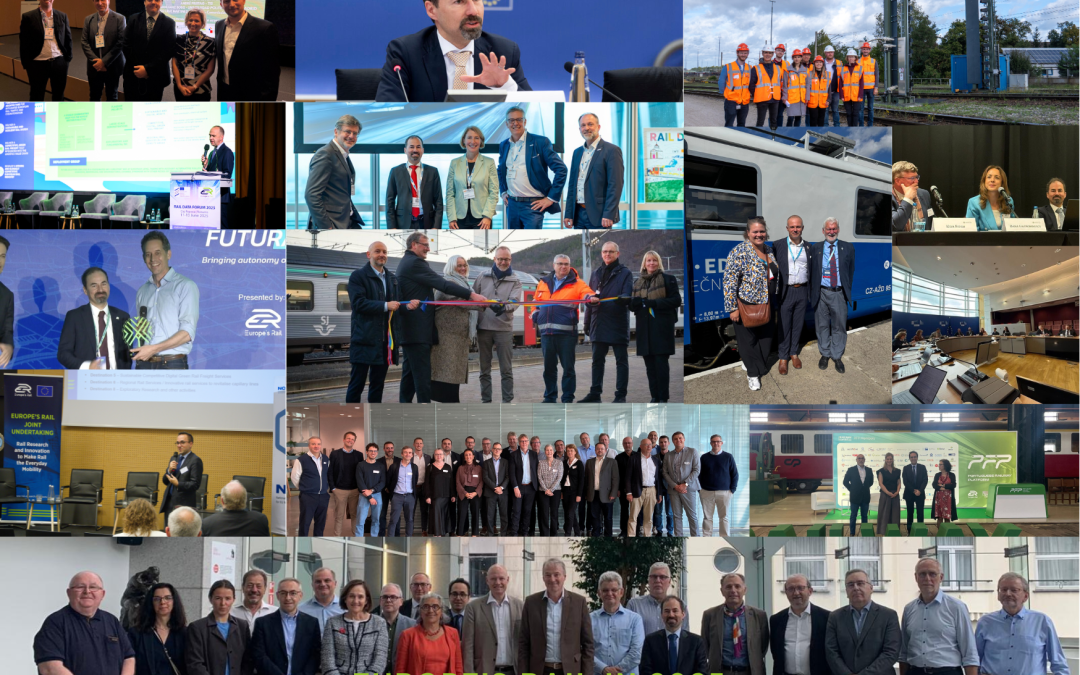2025 saw Europe’s Rail (EU-Rail) make significant progress across multiple initiatives, fostering partnerships and...

Successful innovation often doesn’t happen in isolation – it is the direct result of cooperation.
This is particularly true in the rail sector, where cooperation has facilitated the standardisation and interoperability needed to implement such innovative ideas as the digitalisation of control, command and signalling, and GSM-R, amongst others.
Now, as Europe looks to deliver the high-capacity integrated railway network of the future, cooperation must once again take centre stage – which is why it is at the heart of the three projects funded under Europe’s Rail (EU-Rail) 2024 Call for Proposals.
“Each of our funded projects understands that cooperation helps to turning innovative ideas into the integrated railway system of tomorrow,” says EU-Rail Executive Director Giorgio Travaini.
One of those innovative ideas is Digital Automatic Coupling (DAC).
Replacing manual operations with an advanced, automated and standardised digital solution, DAC has the potential to revolutionise freight transport by enabling longer, heavier and faster trains and easier, quicker shunting processes in the yard.
But before this revolution can hit the rails, DAC must first be fully viable for larger scale implementation – which is where the FP5-DACtiVate project comes in.
Bringing together end-users, industry players, operators, unions, SMEs and academia, the FP5-DACtiVate project aims to advance the full digitalisation of freight train operations in Europe. To do so, it will test the interchangeability between two key components of a DAC unit (coupler head and draft gear) and the ability to mix and match components coming from different suppliers. It will also perform safety tests against derailment and validate the limit of tolerable compressive forces with wagons and locomotives equipped with DAC, as well as the validation against crash tests requirements.
In addition to cooperating with its 21 partners, FP5-DACtiVate is closely cooperating with FP5-TRANS4M-R, an EU-Rail co-funded project that is currently developing the functional requirements and minimum standardised interfaces needed for the interoperable functioning of a hybrid coupler. The hybrid coupler will be tested using a platform developed by FP5-DACtiVate.
The FP5-DACtiVate project also looks to enable the validation of wagon on-board units from different suppliers, demonstrating their compliance with the full digital freight train operation system architecture developed by the FP5-TRANS4M-R project. The architecture will serve as the foundation for authorising full digital freight train operations.
Not only will FP5-DACtiVate’s testing and validation work pave the way towards the successful pre-deployment of DAC-enabled pilot trains, but it will also help establish confidence in the technology before its full implementation. “By preparing for the wide deployment of DAC in Europe, the FP5-DACtiVate project represents a transformative step towards the automation of rail freight operations,” says Javier Ibanez de Yrigoyen, Senior Programme Manager at EU-Rail.
Another innovative idea set to have a big impact on European rail is the implementation of the Future Radio Mobile Communications System (FRMCS). The successor of the Global System for Mobile Communications – Railway (GSM-R), FRMCS is a key enabler of the digitalisation of rail transport and a necessary step towards replacing the soon-to-be obsolete GSM-R.
“As rail becomes increasingly digital and automated, it needs to be able to transmit, receive and use large volumes of data, and the legacy GSM-R system simply cannot keep up,” explains Lea Paties, Senior Programme Manager at EU-Rail. “That’s why it will be gradually phased out and replaced with this new, IP-based communication system.”
With the International Union of Railways (UIC) having provided the European Union Agency for Railways (ERA) with the technical specifications in 2024, FRMCS is now quickly approaching the point of deployment. Helping to get it there is the FP2-MORANE-2 project.
A joint initiative between EU-Rail and the Smart Networks and Services Joint Undertaking, the project also involves European railways and manufacturers, many of whom were directly involved in the UIC’s FRMCS programme. Together, these partners will conduct both lab and in-field testing of the specifications and precommercial system components that will eventually make up the ecosystem of this next generation telecommunication architecture.
Based on these tests, the project will provide feedback to guide any further evolution of the specifications, ultimately leading to the delivery of a final set of specifications that could kick-start the European-wide migration to FRMCS.
While cooperation is essential to future proofing legacy rail systems, when it comes to building a potential new mode of transportation, it is simply not an option.
Take for example the design and development of the hyperloop. By travelling inside nearly airless tubes at fast speeds and on renewable energy, these magnetically levitated trains have the potential to significantly reduce travel times. However, achieving this potential requires that standardisation happen across developers.
Enter Hyper4Rail.
Involving a critical mass of industry representatives – including hyperloop developers, rail operators, infrastructure managers, engineering companies and research institutions – the project aims to create a consensus on all hyperloop-related aspects and components.
Specifically, the project will focus on developing a complete hyperloop design concept, including propulsion, guidance, power supply and levitations solutions. This work will be followed by the in-lab validation of key subsystems. Operational guidelines, business cases and a safety framework will also be developed to align the hyperloop with Europe’s multi-modal transportation goals.
“By harmonising our efforts and with an unwavering focus on interoperability, the Hyper4Rail project represents another step forward in advancing hyperloop technology,” says Judit Sandor, Programme Manager at EU-Rail.
Ultimately, the project’s work will converge to produce a roadmap for industrialising and commercialising hyperloop systems in the years to come.
All three projects are now fully operational and in the process of delivering results, and EU-Rail isconfident that, together, they will help ensure that European rail is fit for the future.
More information on projects funded by Europe’s Rail can be found here.